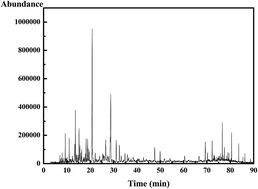Improving the fuel properties of biodiesel via complementary blending with diesel from direct coal liquefaction
Abstract
Complementary blending of biodiesel from waste cooking oil (BWCO) with diesel from direct coal liquefaction (DDCL) was evaluated to improve the fuel properties. The fuel properties of the biodiesel blends with the addition of 0%, 2.5%, 5%, 10%, and 20% DDCL (vol) were determined. It indicated that blending complemented the individual deficiencies and superiorities of the two fuels. The oxidative stability and cold flow properties of BWCO were strongly improved. Simultaneously, the flash point and kinematic viscosity of DDCL were also enhanced. With the blending of 20 vol% DDCL with BWCO, all the main fuel properties of the blends were in accordance with EN 14214 and ASTM D6751. The fuel properties of DDCL–BWCO after storage for 100 days were also determined. In addition, variance analysis was performed using IBM SPSS Statistics to clarify the effect of adding DDCL on the fuel properties of BWCO.


 Please wait while we load your content...
Please wait while we load your content...